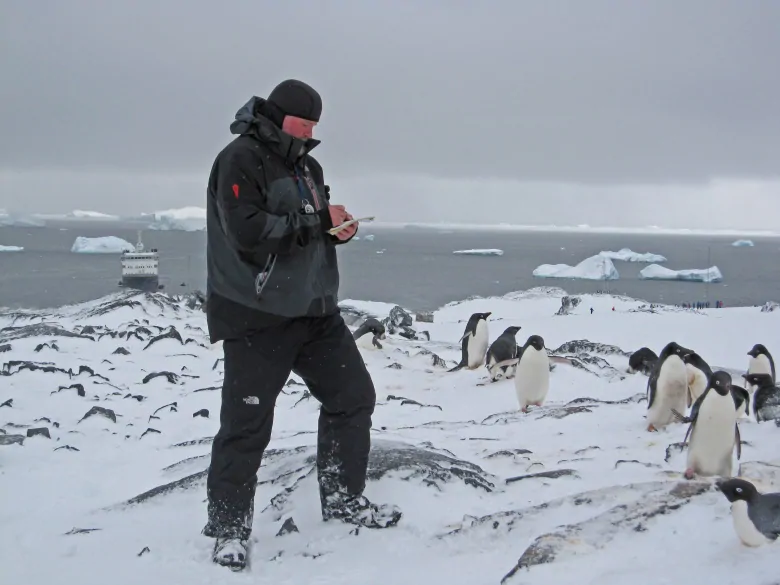Penguin diets key to understanding how climate change could affect humans: study

The eating habits of penguins may serve as a warning about climate change, says University of Saskatchewan professor William Patterson.
Patterson was part of a team that spent years researching how a warming climate and the reduction of sea ice affects penguins’ food sources.
The Adélie penguins and chinstrap penguins both prefer krill — small shrimp like creatures — the sea ice serves as an upside down garden that the krill feed on.
“When climate warms, we reduce the amount of food for the krill, we reduce the amount of krill,” Patterson said. “Animals that depend particularly on krill are at a disadvantage compared to animals that are more generalist and aren’t as choosy in what they eat.”
He compares the problem to the Irish potato famine in the late 1840s. In that case, the potato had become a staple food for many poorer people and when that food was wiped out, they had nothing to eat and there wasn’t a fallback plan, Patterson said.
“Some people were able to leave — about a million and a half people did that,” Patterson said. “Another million people perhaps died from starvation and starvation related diseases.”
For people in a lower income bracket, they may end up disadvantaged by climate change because they aren’t able to diversity their food source, Patterson said.
“When you’re dependent upon one food item you’re really putting yourself at risk for any change that occurs in your environment that affects that one food item,” he said.
The penguins who rely on krill the most are starting to be affected in a way humans may be in the future.
To understand the effects, Patterson and his team collected egg shells from 44,000 years ago that were held in museums, as well as modern-day feathers and egg shells.
“You are what you eat and your egg shells are what you eat as well,” Patterson said. “So the penguins are no longer with us but the egg shells are left behind — we can collect those and determine the diet.”

By seeing a reduction in the amount of krill the penguins eat, it shows the effects of climate change that people may not think of.
“There are some obvious things that we see as humans: sea level rises; coastal flooding; increased storms; increased ferocity of storms,” Patterson said.
“What you don’t see is the knock on effect of reducing sea ice. … That in turn reduces the krill population. That in turn stresses the penguins, the whales, the seals — so the entire chain is in a way disrupted by this warming.”
The findings of the research was recently published in Proceedings of the National Academy of Sciences.





